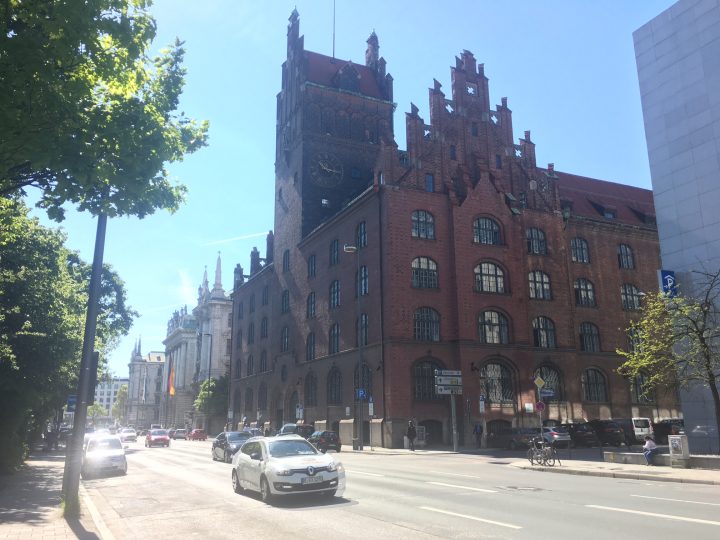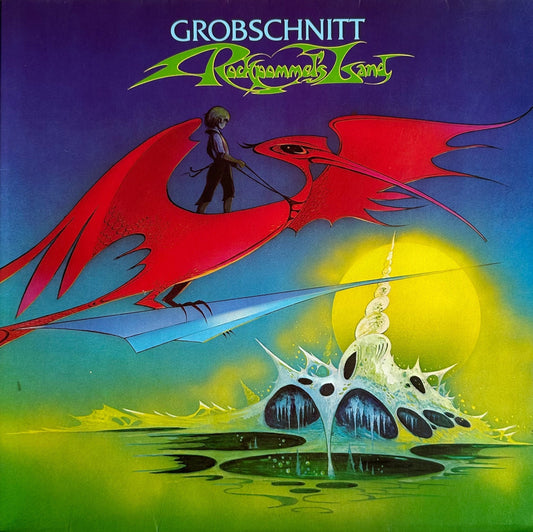When is a show not a show? When it’s a scene, maybe?
I admit to being—-well, hell, blase’ doesn’t begin to describe my attitude towards audio shows. I’m way beyond blase’. I’ve become the cranky old coot who views claims of new technology with a gimlet eye, calls bullshit, and cites prior art. I never claimed to be fun. After having worked shows for manufacturers, and having put on the damn things—-yeah, blase’ doesn’t begin to describe it.
And yet, and yet. There is always the hope: this one could be different.
Somehow, despite having gone to audio shows since dinosaurs roamed the Earth, I’d never been to the Munich High End show. And yes, I’d heard the stories that made it sound like the Burning Man of audio shows, the end-all, be-all….
Given such a build-up, it couldn’t help but be a disappointment. And in a way, it was.

Yep. That ain’t no Motel 6.
On the other hand: it wasn’t. WTH, Leebs?
Okay: most audio shows take place in hotels, the degree of sadness of which varies from venue to venue. The Munich High End show takes place in the MOC, a proper convention center. The glory of the Munich show is that it presents home audio as something that normal, non-deranged people would like to have in their lives. Yes: music! High five! Somehow that whole sense of normalcy is lost in most American shows, in which Aspergers-R-Us is the standard. At 60, pushing 61, I’m often one of the young ‘uns in US audio shows. Kids? Young marrieds? WOMEN??
Fuhgeddaboutit.
You’ll see all of the preceding at Munich, and that is as it should be. We’re talking about MUSIC, for goodness’ sake, one of the necessities of life, right after food, shelter, and >ahem<. Really. This is GREAT! This is as it should be!!

And yet: ho-hum.
At the same time, to this jaundiced, rapidly-aging audio thrill-seeker, the main show floor with its open displays had all the appeal of the Nebraska Furniture Mart. Sorry.
That’s a little harsh: the MOC is an impressively modern facility, immaculately clean and full of light, unlike many convention centers which are dingy beige cinderblocky places that look as though their last major event was a Shriner’s circus in 1974. This is a busy place, and at least to my eyes, it ran smoothly. There could be more places for exhausted show-goers to sit (true of every audio show venue), but there are several restaurants and snack counters, and even a beer garden. For the moment, that’s unique on the show circuit—though it sounds as though the LA show will have a hipstery beer-bar.
The important thing here is that the Munich show is bigger than anything we have in the US. Lots bigger. Some listings include over 500 manufacturers from 40-something countries, and that sounds about right. These are numbers that bring to mind CES in the olden days, when it mattered to the audio world. Final numbers aren’t in—the admirably-thorough show-presenters will eventually have audited numbers—but over 18,000 attendees and 8,000+ industry types were said to have attended. Whether those numbers represent unique attendees or the more-nebulous ‘show-day” measures, is not clear.
Enough of the boring numbers-crunching. Let’s just say this is one of the largest audio shows in the world, has replaced CES as the crossroads of the audio world, and deserves our attention.
First off: to the armchair analyst, floor-diagrams of the MOC are hard to decipher. I was under the impression that the floors 1 and 2 and the Ariums (Atria??) were spread out over a couple hundred acres. Well, chalk that up to poor exploded diagrams. The reality is that floors 1 and 2 are stacked, and the Atriums are above those floors. So it’s not as spread out as it may appear—simply piled high. Think of it as a Wendy’s double stack. Or Triple. Whatever.
Given the unseasonably-warm weather of a few of the show-days—-80 deg F, thank you, hot for Deutschland, if not Florida—those upper floors (Atriums 3.1, 3.2, 4.1, 4.2) were hellishly hot. Sorry, but the whole “air con? No, is too noisy” thing doesn’t fly when my ears are filling with sweat. Do you think THAT helps me to listen critically?
Disgusting? Yeah, that’s the point. Do you think “normal folk” will put up with such conditions? I certainly don’t think so. Bleahh.
Ignore the kvetchings of an elderly, cynical man. This was as good as the audio show-world gets.
Most every company you can think of was represented, cheek to jowl with every other company you can think of. The interesting part was the brands you hadn’t heard of, mostly from eastern Europe. While much of it looked like the same old 6-sided boxes we’re painfully familar with, there were outliers. And those were the products that interested me.
Even before the show began, there were encounters with colleagues. As I wheelie-cased myself from one hotel to another, I encountered Mikey Fremer doing the same, meandering down a prominent Platz with his suitcase. –Yeah, he’s a decade older than me, yet HE wasn’t huffing and puffing. How could I NOT hate him?
 Mikey! I could've plotzed on the Platz.
Mikey! I could've plotzed on the Platz. Unknown old building with cool clock. One of many.
Unknown old building with cool clock. One of many. Not exactly your neighborhood 7-11. I feel like such a rube.
Not exactly your neighborhood 7-11. I feel like such a rube.
No idea what it is, but it LOOKS important.
Moseying down the street pre-show, it is readily evident that one is NOT in Kansas, or near O’Hare, or near LAX, or the Denver Tech Center. This is a real city, with an honest-to-God history, some of which you may not want to dwell upon (>cough beer hall putsch cough Dachau cough<)
The night before the show began, colleague Travis Townes and I were fortunate to have dinner with Michael Lavorgna (AudioStream) and John Darko (Digital Audio Review) at Restaurant Pfisterermühle, which, judging by the ivy on the building, had been there since Homo Habilis began to walk upright. Yes, we do suffer in our quest for enlightenment.

I don’t think you can grow ivy like that in the US. It takes a crumbling, millennia-old facade.
Arriving at the MOC, we quickly transitioned from the 15th century to the 21st. If there weren’t any people in the place, you might be tempted to think it a bit sterile. It’s white on white on white—and humans are the primary element of color. Oh, and stuff, of course.

Again: Not Motel 6.
The open displays on the main floors were the wander-around area, more like the main zoo at CES than the exhibit rooms we generally equate with audio. Obviously, given the open exhibits, these setups were more for seeing than for serious listening. That’s okay—most exhibit rooms are acoustically horrible, anyway (including many of the glassy rooms up on the Atrium levels). I’m not sure what the ultimate intent of such exhibits is, though—you can’t really sample the sonic flavor of the goods, you can’t buy them, and they’re generally not shown by local dealers. I suppose exposure is always a good thing, but it’s an expensive venue for ill-defined exposure.
There I go, getting all logical again. Let’s get back to the fun stuff.
Yes, there was plenty of same ol’ same ol’, but I was struck by a few novel items. As we’ve seen on crowdfunding websites of late, trick turntables are A THING. Some look as though they violate multiple laws of physics, and exist largely just to be different. One such beast was the Mag Lev ‘table exhibited on the main floor—yes, the platter floats after going through a rather tedious prop-up process when turned on. How did it sound? Who knows? I couldn’t take it seriously.

Step right up, ladies and gents—the miraculous magic carpet turntable….
My old friend Ole Lund Christensen was the Scandinavian distributor of KEF while he was still in college, way back in the ’70’s. Since then he’s been all over audio, and was the founder of Gamut (which he pronounces gah-MOOT, btw). He is maddeningly logical, and often comes up with ideas well off the beaten track, and excellent explanations for how and why. Ole was showing a small two-way speaker shaped rather like a Russian nesting doll—-made of cast iron by a Danish company that is an OEM supplier of automotive cast iron components (intake manifolds, turbo housings and the like). As you’d expect, such an enclosure is heavy as hell, and essentially non-resonant. The small internal volume means that a sub is required—models from REL were shown, along with a prototype cast iron sub, looking like a largish cannon ball. The company is called JERN-–don’t ask me why—and knowing Ole, the speakers will sound terrific. Just don’t drop them on your foot!

The small cast-iron speaker from JERN, by a huge REL sub. That much weight up on tippy-toes makes me nervous.
The Chinese company Opera Audio—whose brand name is, confusingly, Consonance—showed an array of nicely-made products including a turntable with a linear-tracking arm, tube amps, and a lovely horn speaker. Again: an open, static display. No idea what this stuff would sound like.

That speaker is kinda Vitavox-y, no?
Also seen on the main floor: the 97th revival of Dynaco (there may have been more tries than that—I’ve lost count). The redesigned Stereo 70 looked a little anonymous and appliance-y to me; their pitch was that the classic circuit had been updated with high-quality modern parts including film resistors, yadda yadda. Plenty of guys I know maintain that the amp was as good as it was BECAUSE of the oil caps and carbon resistors—not IN SPITE of them. Oh, well. I wish them luck; I’m not sure the name still holds any resonance or appeal for today’s buyers.

New Dyna, above the old. Which do you prefer?
Those show-offs at Burmester displayed their in-car systems, complete with the cars wrapped around them. No Kias here….
 Hey! My Jetta is that same color!
Hey! My Jetta is that same color!
That’s a whole lot of €.
Visits to the upper Atrium levels were spread out over a couple days—as mentioned above, the heat up there was ridiculous. Early morning visits were required for this sweaty guy. This is where the really big toys were (aside from the cars, of course). Some rooms sounded pretty decent indeed—an impressive achievement, given the greenhouse-style construction of many rooms.
Living Voice showed their Vox Palladian system—this is a lower-priced lower-priced model, if you can believe that. It’s less expensive than their Vox Olympian—but that’s about all.

So—does that look like an economy system to you??
Vitus Audio sounded terrific as usual, paired with Göbel loudspeakers, a German brand not seen stateside.
 Gryphon, yet another Danish company (!), showed their 4-tower 260,000 € Kodo reference speakers.
Gryphon, yet another Danish company (!), showed their 4-tower 260,000 € Kodo reference speakers.  The Kaiser Kawero! (dunno why there's an exclamation point, but there always is) are among my favorite speakers, and sounded terrific with Kondo electronics (also used by Living Voice). The glass-like lacquer finish reminds me of the dashboard of an old Rolls-Royce. An old LP of Louis Armstrong doing "St. James Infirmary" sounded wonderfully palpable and real.
The Kaiser Kawero! (dunno why there's an exclamation point, but there always is) are among my favorite speakers, and sounded terrific with Kondo electronics (also used by Living Voice). The glass-like lacquer finish reminds me of the dashboard of an old Rolls-Royce. An old LP of Louis Armstrong doing "St. James Infirmary" sounded wonderfully palpable and real.  Amongst "normal" loudspeakers, those from Amphion manage to look a little different, with a variety of colorful grille options. Well-known in the pro world, they deserve to be better known in the consumer world---all the models are terrific, and the big Krypton 3s (seen in the back) are stunningly good.
Amongst "normal" loudspeakers, those from Amphion manage to look a little different, with a variety of colorful grille options. Well-known in the pro world, they deserve to be better known in the consumer world---all the models are terrific, and the big Krypton 3s (seen in the back) are stunningly good.
White with dayglo ain’t my cuppa, but daughter Emily loves the look.
The massive VonSchweikert Ultra 11s sounded powerful and polished with electronics from VAC.
 One of my favorite rooms was in many ways the most outrageous. Korean company Silbatone featured their own tube amps designed by jc morrison (his spelling) played through a stereo pair of Western Electric Mirrophonic M2 theater systems from 1934. This set-up was every bit as dynamic as you'd expect, but was also subtle and sweet. Wonderful.
One of my favorite rooms was in many ways the most outrageous. Korean company Silbatone featured their own tube amps designed by jc morrison (his spelling) played through a stereo pair of Western Electric Mirrophonic M2 theater systems from 1934. This set-up was every bit as dynamic as you'd expect, but was also subtle and sweet. Wonderful.  Below you'll see analog gurus Frank Schröder and Thomas Schick; jc morrison; and a slate-plinthed table built by Schick, based on an old Australian Commonwealth.
Below you'll see analog gurus Frank Schröder and Thomas Schick; jc morrison; and a slate-plinthed table built by Schick, based on an old Australian Commonwealth. 

 After a hard day of show-going, what better way to wind down than to rest in a cool, 800-year-old biergarten mit a little snack und ein Bier oder zwei? Prost!
After a hard day of show-going, what better way to wind down than to rest in a cool, 800-year-old biergarten mit a little snack und ein Bier oder zwei? Prost! 


